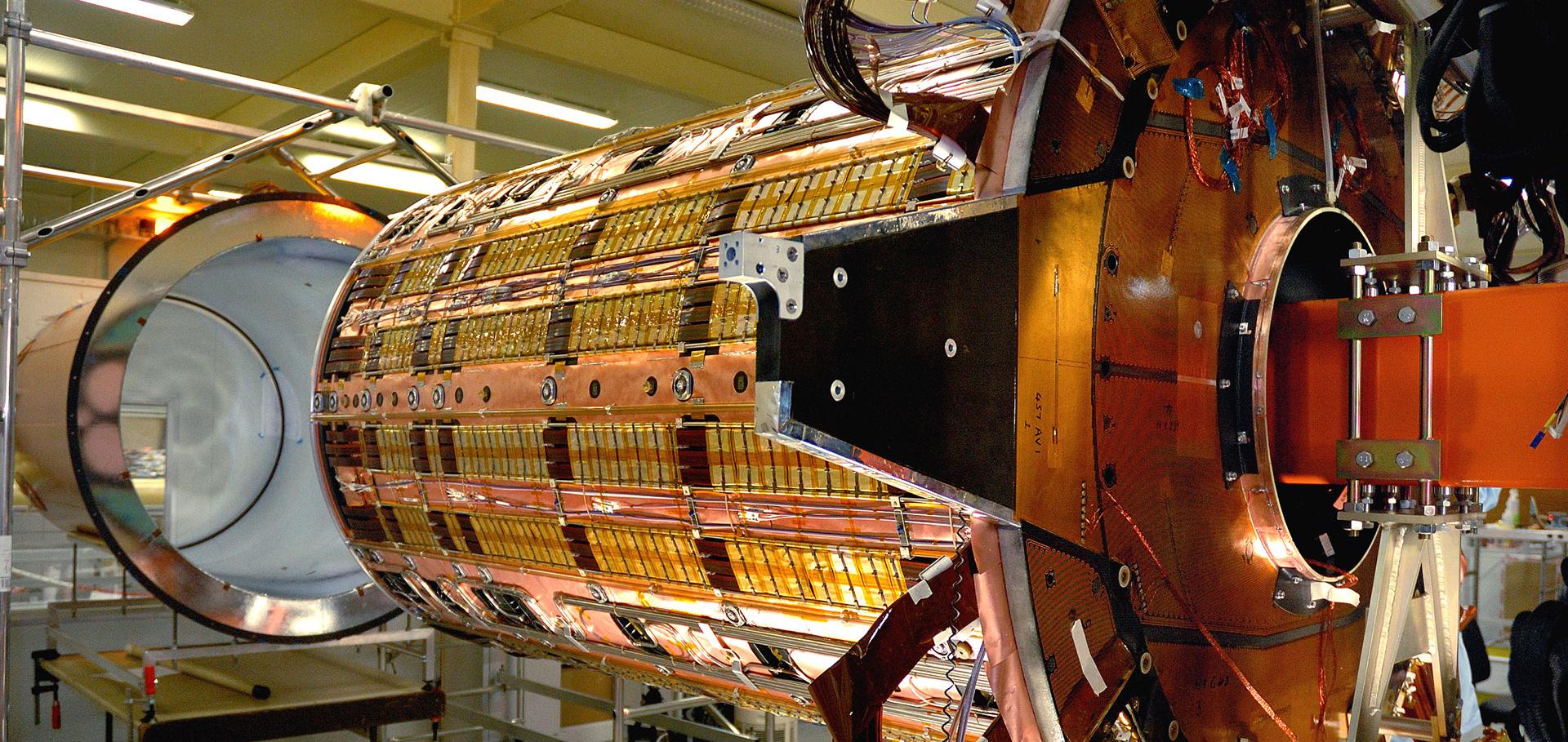Dark Matter Search Results from 4.2 Tonne-Years of Exposure of the LUX-ZEPLIN (LZ) Experiment
Physical Review Letters American Physical Society (APS) 135:1 (2025) 011802
Abstract:
We report results of a search for nuclear recoils induced by weakly interacting massive particle (WIMP) dark matter using the LUX-ZEPLIN (LZ) two-phase xenon time projection chamber. This analysis uses a total exposure of tonne-years from 280 live days of LZ operation, of which tonne-years and 220 live days are new. A technique to actively tag background electronic recoils from decays is featured for the first time. Enhanced electron-ion recombination is observed in two-neutrino double electron capture decays of , representing a noteworthy new background. After removal of artificial signal-like events injected into the dataset to mitigate analyzer bias, we find no evidence for an excess over expected backgrounds. World-leading constraints are placed on spin-independent (SI) and spin-dependent WIMP-nucleon cross sections for masses . The strongest SI exclusion set is at the 90% confidence level and the best SI median sensitivity achieved is , both for a mass of . Published by the American Physical Society 2025First Constraint on Atmospheric Millicharged Particles with the LUX-ZEPLIN Experiment
Physical Review Letters American Physical Society (APS) 134:24 (2025) 241802
Neutrinoless double beta decay sensitivity of the XLZD rare event observatory
Journal of Physics G: Nuclear and Particle Physics IOP Publishing 52:4 (2025) 045102
Abstract:
The XLZD collaboration is developing a two-phase xenon time projection chamber with an active mass of 60–80 t capable of probing the remaining weakly interacting massive particle-nucleon interaction parameter space down to the so-called neutrino fog. In this work we show that, based on the performance of currently operating detectors using the same technology and a realistic reduction of radioactivity in detector materials, such an experiment will also be able to competitively search for neutrinoless double beta decay in 136Xe using a natural-abundance xenon target. XLZD can reach a 3σ discovery potential half-life of 5.7 × 1027 years (and a 90% CL exclusion of 1.3 × 1028 years) with 10 years of data taking, corresponding to a Majorana mass range of 7.3–31.3 meV (4.8–20.5 meV). XLZD will thus exclude the inverted neutrino mass ordering parameter space and will start to probe the normal ordering region for most of the nuclear matrix elements commonly considered by the community.Nuclear Recoil Calibration at Sub-keV Energies in LUX and Its Impact on Dark Matter Search Sensitivity
Physical Review Letters American Physical Society (APS) 134:6 (2025) 061002
Two-neutrino double electron capture of 124Xe in the first LUX-ZEPLIN exposure
Journal of Physics G Nuclear and Particle Physics IOP Publishing 52:1 (2025) 015103


